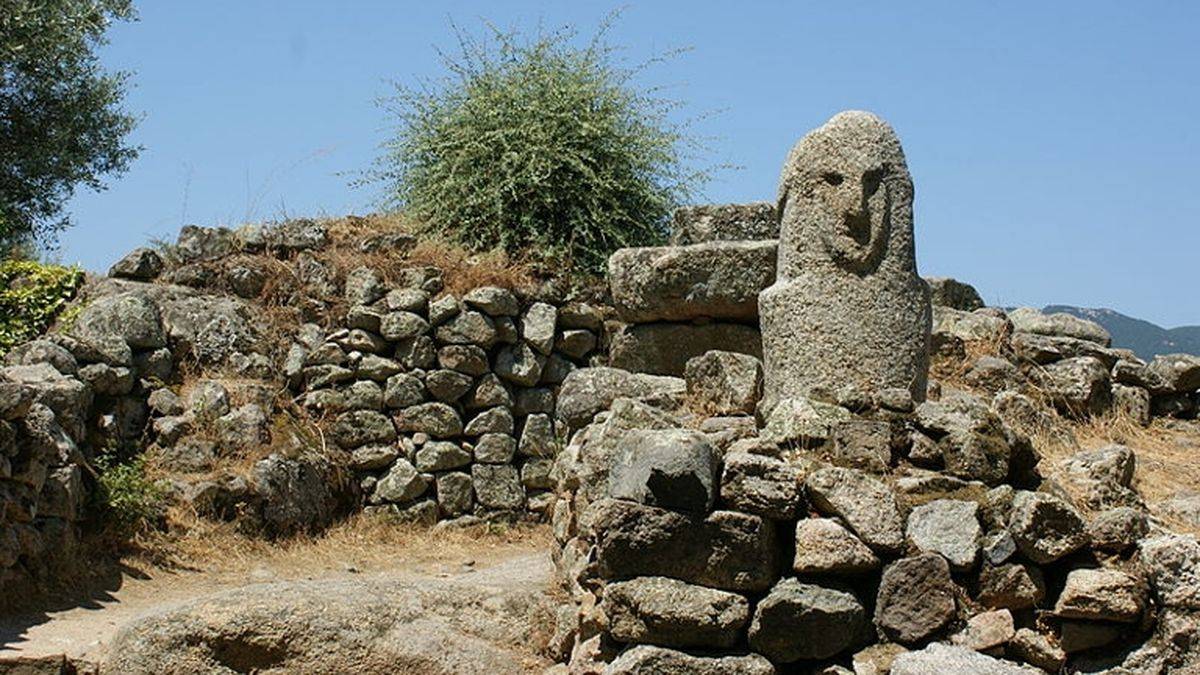 Filitosa IX | ©Sy.forester / CC-BY-SA
Filitosa IX | ©Sy.forester / CC-BY-SAA very important site
In 1946, Charles-Antoine Cesari discovered the site for the first time, in the plot of land he owned in order to raise his own house!
In 1954, archaeologists even discovered a fortified site, nearby!
Today, Filitosa is listed as UNESCO world Heritage.
It’s also the main prehistoric site in Mediterranean!
War and peace
Statues hold weapons looking like swords: we have warriors, here! But what kind of warriors?
Maybe Shardanes, people from the sea, who invaded Corsica.
Those warriors, also known as Torreens, raised buildings called torre, used for the dead’s cremation: Corsican later transformed those one into watchtowers.
In fact, Corsica developed its own megalithic civilization, between 3500 and 1000 BC.
Those ″menhirs-statues″ already existed when the Torreens invaded the island in 1100 BC.
Barbarians who destroyed everything, menhirs included, used the broken fragments to raise their own buildings (the torre).
The Torreens, according to specialist M. Grosjean, never engraved faces in the stone, to commemorate the dead, but incinerated them.
They were famous for the construction of strong fortresses and use of iron weapons. Lots of differences with the primitive Corsican people, less warlike!
The Torreens fought a lot, here. Struggles took place in the area of Filitosa, and it seems the menhirs-statues represented the dead chiefs.
So, on several statues, we can see a helmet and a breastplate...
Discovering men-statues
Several statues are about 3 metres high!
A formidable army of warriors, ready to fight!
Come on, let’s see that! We have about 30 statues.
And we find similarities: those ″stony men″ have a round face, eyes, a visible nose and mouth, a chin… even shoulder blades and a spine!
• Filitosa I: we can see ears and a nice oval face. He’s wearing a sword in relief.
• Filitosa II: pretty damaged, but we guess the human shape!
• Filitosa III, with his lovely face
• Filitosa IV, with his dagger and with visible eyes
• Filitosa V, he has two nice weapons and amazing details, like a shoulder blade...
• Filitosa VI, with his visible face in relief, his helmet, and in his back, an armour protecting his scapula!
• Filitosa VII with his shield
• Filitosa VIII with his weird face
• Filitosa IX: often considered as the master-piece of Occidental megalithic art, with his nice face with regular features, his visible nape, his spine...
• Filitosa X: on his back, we can see a strange drawing, a vertical line and perpendicular ones. A spine? A rib? An armour?
• Filitosa XII, the only statue with arms and hands!
• Filitosa XIII, with his prominent chin.
Inside the small museum, we also discover the statue of Scalsa-Murta: there are holes in his head! Why? To put horns in order to represent a helmet…
